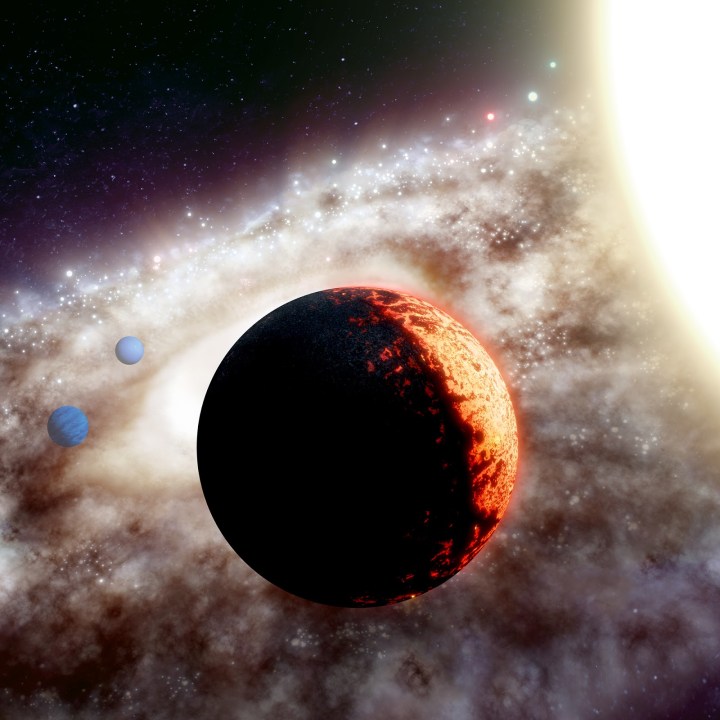
Researchers have identified one of the oldest planetary systems ever discovered, and it’s a strange one. A rocky planet called TOI-561b orbits a star that is 10 billion years old, more than twice the age of our sun which shows that planets have been forming since the early days of the universe.
The planet, which is about 1.5 times the size of the Earth and is therefore called a Super-Earth, orbits its star more than twice in one Earth day. It whips around its star so fast because it is located very close to it, which means the planet has a seriously high surface temperature of over 1,700 degrees Celsius.
The super-fast year and the high temperatures aren’t the only notable features of this extraterrestrial oddity, however. The planet also has an unusually low density for its size, as although it’s about three times the mass of Earth, it has the same density as our planet. That suggests that it’s very old, according to the study’s authors.
Older planets are less dense because they have fewer heavy elements like metals. These heavy elements are created within stars as they get older and eventually explode in a supernova, distributing the elements into the space around them from which planets form. Earlier in the universe, fewer star explosions had occurred and so planets formed with fewer heavy elements in them.
“TOI-561b is one of the oldest rocky planets yet discovered,” University of Hawaii postdoctoral fellow and team lead Lauren Weiss said in a statement. “Its existence shows that the universe has been forming rocky planets almost since its inception 14 billion years ago.”
The team spotted the planet using NASA’S Transiting Exoplanet Survey Satellite, or TESS, and confirmed its presence using the W.M. Keck Observatory in Hawaii.
The lead author of the study, Stephen Lane of the University of California, Riverside, said that this finding could be just the beginning of many more rocky planets around older stars to be discovered in upcoming missions.
“Though this particular planet is unlikely to be inhabited today, it may be a harbinger of many rocky worlds yet to be discovered around our galaxy’s oldest stars,” Kane said.
The research was presented at the 2021 meeting of the American Astronomical Society and will be published in the Astronomical Journal.



